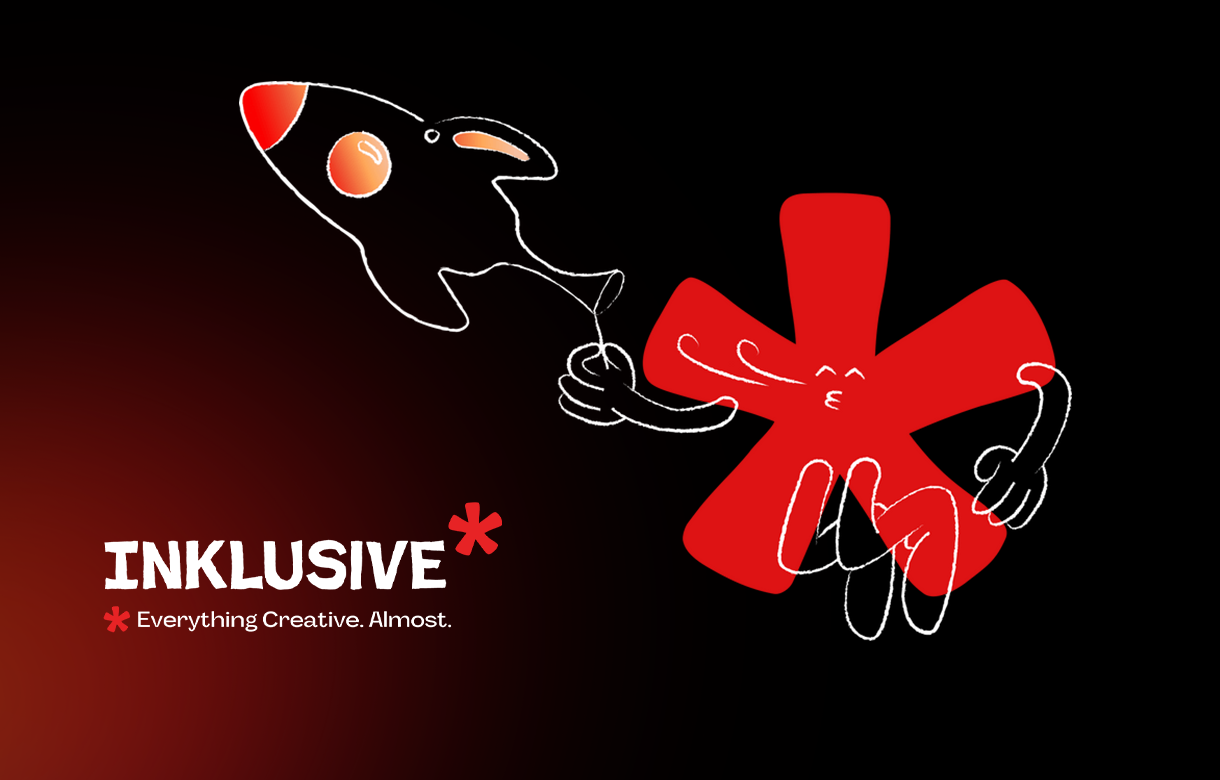In the world of illustration art, the ordinary is just a canvas waiting for transformation into the extraordinary. Here, each gesture crafted by the artist isn’t just a mark on the page; it’s a narrative coming to life. A skilled illustrator can transform a simple concept into a visual feast for the eyes.In this engaging art form, every image you encounter is an invitation to an unforgettable journey. As you dive into each illustration, you’re not just observing – you’re experiencing. You’re not merely a spectator; you’re an active participant in a story told through visuals.As you dive into each illustration, you’re not just observing – you’re experiencing.It’s time to step into the dynamic and colorful world of illustration, where every line, color, and character narrates tales that go beyond the canvas.
What is Illustration Art?
In illustration art, drawings, paintings, or digital images are used to convey ideas and narratives, often enhancing written content. It serves specific purposes in books, magazines, advertisements, and digital media. With its ability to simplify complex ideas and enhance communication, this versatile art form is essential to both the artistic and commercial worlds.
Definition of Illustration Art
Illustration art is the creation of images to depict ideas, narratives, or concepts, often accompanying text or used in various media. It serves to enhance, explain, or embellish written content, making it more engaging and understandable. A wide variety of media are used in this art form, including pencil and paint, as well as digital platforms, and it can be found in books, advertising, media, etc.
The Relevance of Illustration in Graphic Design
Illustration is like the secret ingredient in graphic design. It adds personality and depth to designs. Graphic designers often use illustrations to create a brand identity, convey a message more effectively, or just make their designs stand out. An illustration can capture attention, evoke emotions, and make people remember a design. An engaging and visually appealing video can tell a brand’s story, convey values, and communicate its message.From publishing to advertising and even digital media, illustration art plays a crucial role in various industries. It’s all about putting your imagination to work.
Diverse Types of Illustrations
Editorial Illustration
Imagine you’re flipping through a magazine or reading a blog. You come across an image that perfectly captures the essence of the article. That’s an editorial illustration. These illustrations complement the text, giving readers a visual representation of the themes or emotions in the story. They’re not just decorations; they add depth and understanding to the written word.
Advertising Illustration
Now, think about those captivating images in ads that make you stop and look. Advertising illustrations are designed to sell – whether it’s a product, a service, or an idea. They’re persuasive, often playful, and aim to connect with the audience on an emotional level. The goal? To make you remember and, ideally, buy what they’re selling.
Concept Art
Concept art is like a sneak peek into another world. It’s used extensively in movies, video games, and animation to create a visual representation of an idea before it’s brought to life. These illustrations are all about imagination – think fantastical landscapes, out-of-this-world creatures, and futuristic cities. It’s the blueprint for the visual storytelling that happens in these mediums.
Fashion and Technical Illustration
In the fashion industry, illustrations are used to bring designs to life before they’re ever sewn. They’re detailed, focusing on the design, texture, and flow of the garment. Similarly, technical illustrations are used in manuals, textbooks, and how-tos. They’re precise, often showing the inner workings of machines or detailed processes. Both types are about clarity and detail.
Infographics – A Trending Illustration Type
Infographics have taken the world by storm! They turn complex data and information into easy-to-understand, visually appealing graphics. They’re a mix of illustrations, charts, and minimal text, and are incredibly effective in education, business, and media for explaining intricate concepts in a simple, digestible way.
Packaging and Scientific Illustration
Lastly, let’s talk about packaging and scientific illustrations. Ever admired the artwork on a product’s packaging? That’s a packaging illustration. It’s about creating an attractive, informative, and brand-aligned design. Scientific illustrations, on the other hand, are all about accuracy.
Illustration vs Other Art Forms
How Graphic Design Differ from Illustration?
Think of graphic design as a digital wizard. It’s all about creating visually appealing designs that communicate a specific message or function. Graphic designers focus on brand identity, layouts for websites, or visuals for ads. They often use typography, photos, and graphics (which can include illustrations) to make a cohesive, appealing design.Let’s imagine an illustrator as a storyteller using a paintbrush (or a digital tablet). Illustration is more about storytelling than branding or selling a product. Illustration is usually free-flowing and personal, while graphic design can be more structured and commercial.
What’s the Difference Between Art and an Illustration?
Compared with a mission-focused illustrator, a free-spirited artist would be considered a free spirit. Fine art is about self-expression. It doesn’t have to serve a purpose or follow rules. It’s what you’d typically see in galleries and museums – a reflection of the artist’s thoughts, emotions, or worldviews. Think of it as a visual diary or a conversation without words.An illustration, on the other hand, serves as a visual assistant. Its purpose is to enhance or clarify concepts, tell stories, or support written content. Illustrations, like visual aids, are always serving a specific purpose, whether it’s illustrating a children’s book, a magazine article, or a poster. They serve as visual aids that make the message more clear.
Techniques to Master in Illustration Art
Woodcutting and Metal Etching
Woodcutting is like carving your story into wood. You carve out your design on a wood block, apply ink, and press it onto paper. It’s one of the oldest techniques and gives a distinct, rustic look. Metal etching, on the other hand, involves etching your design onto a metal plate.
The Art of Pencil and Charcoal Illustration
Pencil and charcoal are like the bread and butter of illustration. Simple yet versatile, they allow for a range of styles, from detailed and realistic to loose and expressive. Pencils are great for fine lines and details, while charcoal is perfect for bold, dramatic effects. Both are fantastic for learning the basics of shading and texture.
Lithography, Watercolor, and Gouache Illustrations Explained
As a form of magic, lithography works by drawing on a limestone or metal plate with a greasy substance, and then ink adheres only to the design. Watercolor, with its translucent qualities, is all about fluidity and blending. Creating vibrant, matte illustrations is a breeze with gouache, which is similar to watercolor but opaque. These mediums are perfect for creating colorful, expressive illustrations.
Acrylics and Collage Illustration Techniques
In addition to being versatile and fast-drying, acrylic paints mimic both watercolor and oil paint, making them a favorite among illustrators. For experimenters and bold artists, collage is like creating a visual puzzle. You piece together various materials – paper, photographs, fabric – to create a unique illustration.
Pen-and-Ink and Freehand Digital Illustrations
Pen-and-ink is all about precision and contrast. It’s great for detailed line work and bold, black-and-white illustrations. Freehand digital illustration is like the modern playground of artists. Using a tablet and stylus, you can create anything you can imagine with the added benefits of digital tools – undo buttons, endless colors, and various brushes.
An Introduction to Vector Graphics
You use mathematical equations to create vector graphics, which means they can be resized endlessly without losing quality. Programs like Adobe Illustrator are used to create vector graphics. It is ideal for logos and icons that are clean and scalable.
Identify Your Unique Illustration Style
The Journey to Finding Your Illustration Style
You’re on a treasure hunt here. You’re exploring different terrains, searching for something that is in tune with you. You don’t decide your unique style of illustration one morning; you evolve it over time. It’s like your artistic fingerprint – a combination of your tastes, experiences, and way of seeing the world.
Experimentation and Practice in Illustration
The key here is to be curious and adventurous. Imagine being in an art store, and you get to try out every tool and technique. Experiment with different mediums – watercolor, digital, charcoal, anything you can find. With every stroke and sketch, you learn a little more about what works for you and what doesn’t.
Draw Inspiration from Others
Look at artists you admire – how do they use color? What about their line work? But don’t just copy them. Instead, let their work inspire you. Maybe you like the way one artist uses texture, and another uses storytelling. Take their inspiration and make something unique.
Seek Feedback
You can make a huge difference if you share your work with family, friends, or even online communities. Constructive criticism can help you see things you didn’t think about. It’s like having someone guide you on your treasure hunt. You should remember, though, that feedback is important, but your style should ultimately make you happy.Finding your illustration style is a journey of self-discovery. It’s about trying new things, learning from others, and being open to growth and change. Your style will evolve as you do, and that’s the beauty of being an illustrator. Keep exploring, keep creating, and most importantly, enjoy the ride
Steps to Becoming a Professional Illustrator
Grab your favorite sketchbook and let’s get started!!!!
Establish a solid foundation
First things first, let’s talk about skills. You need to sharpen those pencils and your abilities. Dive into drawing fundamentals – study anatomy, perspective, color theory, and composition. This is like your training montage where you’re honing your superpowers. And remember, practice isn’t just something you do; it’s a daily practice.
Create a unique style
Now, it’s time to find your voice in the art world. Experiment with different styles and mediums. Do you prefer watercolor, digital, or pen-and-ink? Give everything a try! Your unique style will evolve naturally, and it’s what will set you apart in the sea of illustrators.
Build a portfolio that stands out
This is your golden ticket. A portfolio showcases your best work and tells potential clients what you’re all about. Include a variety of pieces that show your range and style. Think of it as a visual resume – it should be impressive, professional, and, most importantly, you!
Become business savvy
Here’s where the left brain meets the right. Learn about the business side of being an illustrator. Understand contracts, pricing, invoicing, and client communication. It might not be as fun as drawing, but it’s what turns a hobby into a career. A little business savvy goes a long way.
Get out there and network
Time to get social! Attend art fairs, join online communities, and connect with other artists. Social media is your friend – use platforms like Instagram to showcase your work and reach a wider audience. Having a network might feel like a chore, but it’s a powerful tool to get your name out there.
Be open to learning and adapting
Attend workshops, watch tutorials, and never stop learning your craft. Remember, every great artist was once a learner, just like you. Keep up with new tools, techniques, and trends.
Keep a positive attitude and stay persistent
There will be ups and downs, but perseverance is key. Stay positive, keep creating, and don’t let setbacks dampen your spirit. Your hard work and passion will pay off.
INKLUSIVE*: Bringing Stories to Life
In the world of illustration art, where every stroke tells a story and every image is a journey, INKLUSIVE* stands as a source of creativity and innovation. Our comprehensive design subscription service is tailored to cater to the dynamic needs of fast-paced marketing teams, Extending the essence of conversational design by transforming ideas into visually compelling narratives.With our diverse team and commitment to quality, we offer a unique blend of artistic expression and strategic design solutions, ensuring your projects not only stand out but also tell a compelling story that aligns with your brand’s vision.Let us be your partner in this artistic journey, and together, let’s bring your ideas to life in the most vibrant and impactful way possible. Subscribe to INKLUSIVE* to get started with a streamlined approach to design.
Frequently Asked Questions:
Q1. What is illustration art style?
Illustration art style is a unique way an artist creates images to tell a story or convey a message. It’s more about communicating ideas visually, often in support of text, like in books, magazines, or ads.
Q2. What is the difference between drawing and illustration?
Drawing is the act of creating a picture with any tool (like a pencil or pen), mostly focusing on the process and technique. Illustration is more about the purpose behind the drawing – it’s usually created to explain or accompany text and often tells a story or provides information.
Q3. What is the difference between animation and illustration?
Animation is creating a series of drawings that, when shown in sequence, create the illusion of movement (like cartoons or animated movies). An illustration is typically a single image created to tell a story or provide a visual representation, and it doesn’t move.
Q4. What is ‘rendering’ in illustration?
Rendering in illustration refers to adding color, shading, and texture to a drawing to make it look more realistic and finished. It’s the process of refining the illustration to bring it to life.
Q5. How can we make money through digital art or illustrations?
You can make money through digital art or illustrations by selling your artwork online, taking on freelance illustration jobs, creating and selling prints or merchandise, working with clients on Illustration art style is a unique way an artist creates images to tell a story or convey a message. It’s more about communicating ideas visually, often in support of text, like in books, magazines, or ads.Drawing is the act of creating a picture with any tool (like a pencil or pen), mostly focusing on the process and technique. Illustration is more about the purpose behind the drawing – it’s usually created to explain or accompany text and often tells a story or provides information.Animation is creating a series of drawings that, when shown in sequence, create the illusion of movement (like cartoons or animated movies). An illustration is typically a single image created to tell a story or provide a visual representation, and it doesn’t move.Rendering in illustration refers to adding color, shading, and texture to a drawing to make it look more realistic and finished. It’s the process of refining the illustration to bring it to life.You can make money through digital art or illustrations by selling your artwork online, taking on freelance illustration jobs, creating and selling prints or merchandise, working with clients on











.jpg)
.jpg)


.jpg)



.jpg)






%20(1).jpg)




%20(1).png)